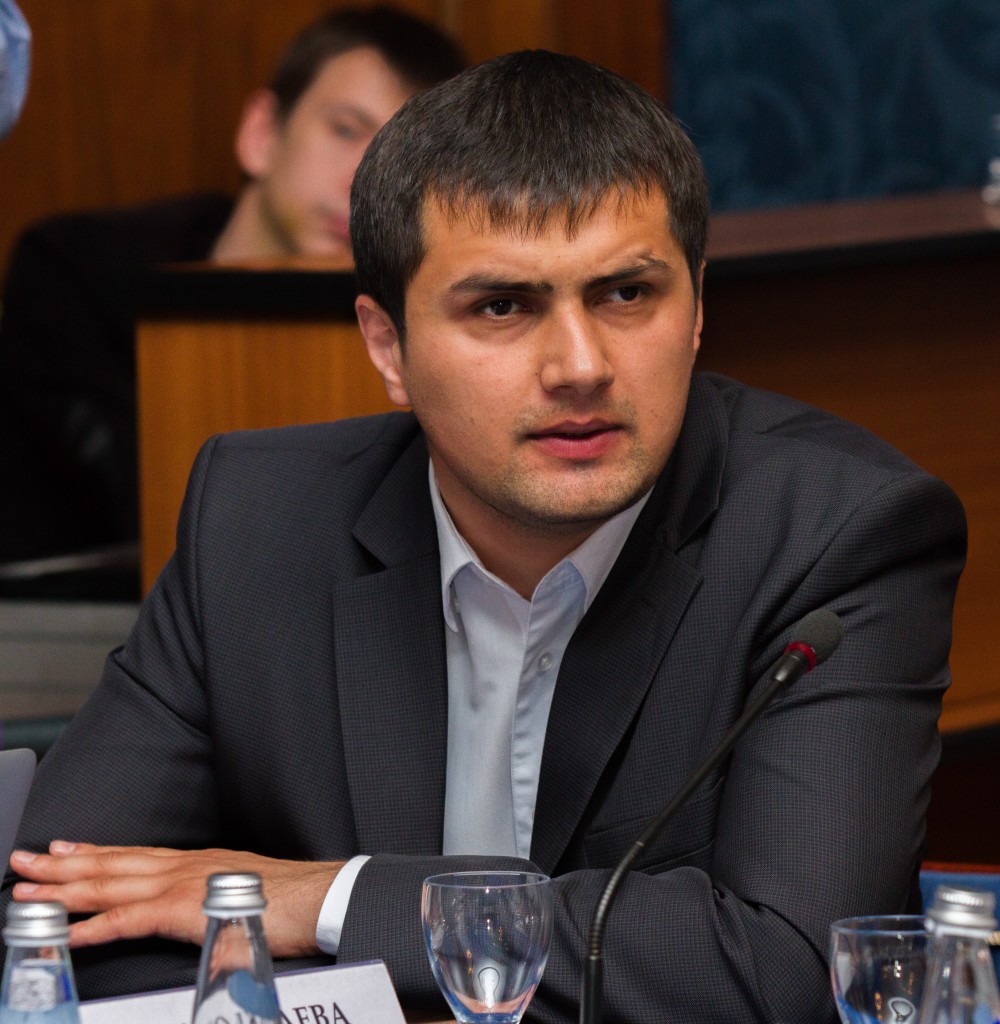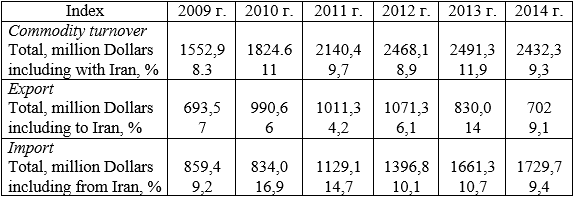“Worthy of note is that, despite a modest contribution of Iran to Tajikistan’s economy, it is thanks to its close cooperation that Dushanbe will be able to achieve three strategic goals: break a communication deadlock, ensure energy and food security”, – says Khursand Khurramov, a political analyst, specially for cabar.asia, giving his forecasts on the development of the Tajik-Iranian relations.
The Islamic Republic of Iran, since 1990, has traditionally been paying considerable attention to the Central Asian region. Under the conditions of acute US-Iranian differences, the situation prevailing at the end of the Cold War was strategically unfavorable for Iran. Tehran has been forced to deal with a whole range of threats and challenges: in the south – with the American military presence in the Gulf region and a coalition of Arab monarchies, led by Saudi Arabia; in the west – with the potential instability in Iraq and traditionally difficult relations with Turkey; in the east – with the likely consolidation of Afghanistan under the authority of a hostile to the Shiite branch of Islam, movement of Taliban. In these circumstances, it became important for Iran to avoid isolation of the country in the north, and to prevent creation of alliances confronting Tehran in the Transcaucasus and Central Asia.[1]
Guided by its foreign policy strategy, the main objective of which is to turn Iran into a leading state in the Middle East, the country began to show rapid activity in the region. However, over the entire post-Soviet period, a more intimate level of relations Iran has formed precisely with Tajikistan. This is due, above all, to ethnic and cultural proximity of the Tajiks and Iranians.
In 1991, the Islamic Republic of Iran was one of the first countries to recognize the independence of the Republic of Tajikistan, and in January 1992 was the first to open its embassy in Dushanbe.[2] Tajikistan’s declaration of independence provided Iran with an unprecedented opportunity to extend its footprint and create a new geopolitical axis of Tehran – Kabul – Dushanbe. Such an alignment of forces would have presented significant competition to integration processes of Turkic countries in the region. Certain circles in the Iranian political establishment even considered Tajikistan as part of a “Greater Iran” under the concept of “Aryan Unity”[3].
Initially, despite the opinion of many researchers, the Iranian foreign policy strategy for Tajikistan was elaborated on the basis of cultural-historical commonality, rather than religious, as Iranians and Tajiks belong to different branches of Islam.
Inter-Tajik conflict presented Iran with the need to resolve the contradiction between ideological imperatives, pushing for support of the United Tajik Opposition (UTO), and interest in stability in Central Asia and cooperation with Russia.[4] Although Iranian conservative political circles provided support to the Tajik opposition and the Iranian press sympathized with its Islamic part[5], official Tehran, soberly assessing the balance of power in Tajikistan and its own capabilities, embarked on a cautious and balanced policy. For this reason, Iran’s official position was expressed in the need for a speedy settlement of the inter-Tajik conflict. By taking an equidistant stance towards the opposing sides, Iran facilitated contacts between UTO and Russia, prompting opposition forces for a compromise.
The signing of the inter-Tajik peace treaty in 1997, contributed to the rapprochement of Iran and Russia’s positions in the region and laid a solid foundation for the Iranian-Tajik cooperation.
From peacekeeping to pragmatism
Further on, Iran took a significant position on the investment in the Tajik economy, actively investing in hydropower and infrastructure of Tajikistan. Among the largest projects to be noted are the hydroelectric power station Sangtuda-2, in which Iran invested $220 million and the construction of the Anzob tunnel in the amount of $30 million, connecting Dushanbe to the northern part of the country. Also in the offing, Iran planned to build a large Aini hydropower plant on the river Zarafshan, with the capacity of 150MW, the creation of a 500-kilovolt transmission lines from Tajikistan through Afghanistan to Iran and Pakistan, as well as the construction of roads and railways Kolkhozabad – Nizhny Pyanj – Kunduz – Mazar-i-Sharif – Herat – Mashhad.[6]
In addition, an agreement was signed between the governments of Tajikistan, Iran and Afghanistan on transportation of clean drinking water from Tajikistan to Iran. Unaddressed remains the question of construction of a railway Iran-Afghanistan-Tajikistan-Kyrgyzstan-China, the route draft of which was determined upon in 2014.[7]
Expressing solidarity, Tajikistan, in turn, had repeatedly advocated the lifting of international sanctions against Iran, expressing support for Iran’s peaceful nuclear program, and actively advocated for the inclusion of Iran in the SCO.
However, political practice shows that the dynamics of the Tajik-Iranian relations depends on the representatives of ideological groups (conservatives and reformers) in power. Thus the most favorable time in the Tajik-Iranian relations can be considered the presidency of the conservative Mahmoud Ahmadinejad. It was precisely during this period in time that the most important strategic projects in Tajikistan were implemented. Being a staunch anti-Westerner, Mahmoud Ahmadinejad devoted a great deal of attention in his foreign policy to the Persian-speaking world. Worthy of notice here is the initiative of establishing a Persian-language television and a joint University with Tajikistan and Afghanistan.[8]
Conservative political elite of Iran to some extent also warded off transport isolation of Tajikistan imposed by Uzbekistan during the period of acute conflicts. Thus in 2010, when about 700 Tajik cargo train cars were detained on the territory of Uzbekistan, Iran intervened in the conflict, “warning Uzbekistan that in the event that the blockade continues, it would limit the transit of Uzbek cargo trains via its territory”.[9]
Besides, Emomali Rahmon had developed quite friendly interpersonal relations with Mahmoud Ahmadinejad, which contributed to a further strengthening of bilateral state relations.
The economic component
During the years of independence, over 100 interstate documents have been signed between the two countries. To date, more than 200 Iranian companies operate in Tajikistan.[10]
Grant assistance of Iran from 2002 to 2014 amounts to $33.2 million.[11]
According to the Agency for Statistics under the President of the Republic of Tajikistan for the period of 2009-2014, the exports portion to Iran in the economy of Tajikistan varies from 6% to 14%. The highest showing is that of 2013, amounting to $116 million. In 2014, the share of exports fell almost by 5%, comprising $64 million. Imports of goods from Iran traditionally exceed exports, and for 2014 it is 9.4% – $162.2 million. The highest rate of import accounts for 2011, which is 14.7% or $165 million.[12]
Recent economic indicators show that trade between the two countries tends to decline. In 2014, the decline of trade turnover amounted to almost 3%, while exports fell by 5%, which to some extent can be attributed to the deterioration of financial and economic situation in Tajikistan, as well as the decrease of remittances from Russia.
Figure 1. Foreign Trade of Tajikistan with Iran in 2009-2014.
Source: Agency for Statistics under the President of the Republic of Tajikistan, 2015
During 2014, the trade turnover between Tajikistan and Iran amounted to more than $226 million, or 9.3%. The main export of goods to Iran is cotton and aluminum. In imports, dominant are such products as machinery and technical equipment, cement, detergents, products from ferrous metals and plastic, finished products made of wheat flour and other food products.
Contemporary differences
The rise to power in Iran of the reformer Hassan Rouhani largely shifted the emphasis in the foreign policy of this country. The leadership of the Islamic republic began to attach more importance to the establishment and intensification of relations with the West.
At the same time, Tajikistan launched a “deislamation of society” campaign, which, among others, included a ban on minors attending mosques, the call-off of Tajik students studying in the Iranian, Pakistani and Egyptian universities, restriction on wearing Muslim clothing. All these events as a whole caused particular irritation in Tehran. Recent events associated with the banning of the Islamic Renaissance Party in the country, to some extent served as a point of no return in the Tajik-Iranian relations. This is also confirmed by the anti-Iranian campaign[13], which began in Tajikistan, following an invitation to a conference in Iran of the chairman of the banned Islamic Renaissance Party of Tajikistan, Muhiddin Kabiri. One has to admit that the absence of an asymmetric response to the situation on the part of Iran speaks of its political pragmatism and merely a temporary pause in the Tajik-Iranian relations.
Substantial tension in the Tajik-Iranian relations at present is added by the “Babak Zanjani case” – an Iranian billionaire, who is sentenced to death in his home country for embezzlement of public funds in the amount of €2 billion, 60 million. The Iranian side considers that “the proceeds of the sale of oil remained in Tajikistan. Zanjani has only false documents about the transfer of this amount, with which he was provided by the National Bank of Tajikistan”[14]. The National Bank of Tajikistan, in turn, refuted the allegations, stating that it has no relation to these funds whatsoever. Notable is the fact that Tajik officials flatly refuse to admit that the Iranian billionaire has been a major investor in Tajikistan, more than that, he participated as a guest of honor at the opening of the Asian Express Terminal in Dushanbe with President Emomali Rahmon.
Thus, the Tajik-Iranian relations at present are characterized by a certain turbulence. However, given their strategic importance, it seems that this trend is temporary.
Conclusion
Tajikistan, as a vulnerable entity in the region, and having difficult relations with its neighbors, will effectively need patronage, which Tehran, in large part, will be in a position to provide. Russia, due to proximity with all the countries of the region, would rather play the role of an arbiter, but will not substitute Iran for Tajikistan. In addition, being in close relations with China and Russia, to which Iran is also an important strategic partner, Dushanbe will not be able to absent itself for long from friendship with Tehran.
Sequential lifting of international sanctions against Iran will contribute to the economic growth of this country and at the same time increase its geopolitical ambitions. In this context, especially attractive for Iran will be the Central Asian region, through which, in the future, transport and communication systems can be laid towards China.
Worthy of note is that, despite a modest contribution of Iran to Tajikistan’s economy, it is thanks to its close cooperation that Dushanbe will be able to achieve three strategic goals: break a communication deadlock, ensure energy and food security.
References:
[1] Troitskiy E. F. Iran’s policy in Central Asia in the 1990s (2010), Bulletin of the Novosibirsk State University
[2] Tajik Foreign Ministry official website: http://mfa.tj/ru/otnosheniya-so-stranami-azii-afriki/tadzhikistan-iran.html
[3] Knyazev A.A. Iran and Central Asia: Strategy of Dialogue (2012) http://rus.kg/news_rus/analytics_rus/2408-aleksandr-knyazev-iran-i-centralnaya-aziya-strategiya-dialoga.html
[4] Khrustalev M. A. , Civil war in Tajikistan: Origins and Prospects. М-1997
[5] Herzig E/ Iran and Central Asia // Central Asian Sequrity: the New international Context/ L; Washington, 2010. 171-198
[6] Knyazev A .: Iran’s regional strategy in Central Asia – evolution and priorities http://ia-centr.ru/expert/963
[7]Mekhdiyev. E. Strategic interests of Iran in Central Asia (2015).,http://gorchakovfund.ru/news/18070/
[8] See .: Summit of the three presidents // Facts and Comments, August 3, 2006, №15
[9] Iran threatens Uzbekistan with restrictions on transit of rail freight, demanding an end to the blockade of Tajikistan (2010) http://www.centrasia.ru/newsA.php?Month=6&Day=16&Year=2010
[10] Ministry of Foreign Affairs of the Republic of Tajikistan official website:http://mfa.tj/ru/otnosheniya-so-stranami-azii-afriki/tadzhikistan-iran.html
[11] Tajik authorities are advised to keep neutrality // (2016) http://news.tj/ru/node/220079
[12] Tajikistan in figures / Agency on Statistics under the President of the Republic of Tajikistan., 2015, p.133
[13] Tajik authorities are advised to keep neutrality // (2016) http://news.tj/ru/node/220079
[14] SCI: Babak Zanjani has never invested in Tajikistan (2015) http://news.tj/ru/news/goskominvest-babak-zandzhani-nikogda-ne-investiroval-v-tadzhikistan
Author: Khursand Khurramov, a political analyst (Dushanbe, Tajikistan)
The opinion of the author may not necessarily reflect that of cabar.asia



